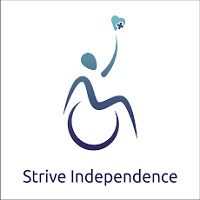The NDIS was planned to bring specialist disability services under a single umbrella, moving away from the earlier fragmented and ineffective disability system.

Initially, the NDIS was intended to serve the following three community sections:
- For Australian (Tier 1): The NDIS would offer insurance against support costs in acquiring a considerable disability.
- For Australian people with disability and their carers (Tier 2): The NDIS would provide information about care and support options for disabled people and service providers as well as referrals to services that are not directly under the NDIS’s control: i.e. community groups and mainstream services. The objective was to enhance employment and community engagement for people with disabilities.
- For people with long-term disabilities (Tier 3): The NDIS would deliver individually tailored support following an assessment process. This third section would account for many costs of the NDIS.
Which Principles Form The NDIS?
The essential principles underpinning the NDIS were:
- To improve the well-being of people with disability and their carers and lessen the longer-term costs of care and support.
- To boost awareness and change perspectives about disability and support the participation of people with disability in community activities. It brings advantages to the whole community.
- Assisting individuals in becoming independent and participating in society and the economy. People with disability better know what they require, and decision-making power should be provided to them rather than government and service providers.
- To provide a specific and sufficient source of future funding for proper life planning and assistance with self-care activities in Australia for people with disability.
- To develop a sustainable and effective scheme through stable governance.
Eligibility And Assessment To Access The NDIS
The NDIS was also planned to deliver funding determined by need rather than a random amount. When it comes to people with significant and long-term disabilities (tier 3 participants), the criteria for eligibility would evaluate their disability and functional capability (i.e. their ability to do things, including social activities).
According to the Productivity Commission, assessment tools should be built to determine the level of needs and funding, with safeguards to ensure fair use and sustainability:
- An allied health professional should conduct objective assessments based on existing medical reports and collaborate with a person with a disability and their ‘circle of support’ (i.e. family, carers and direct support professionals);
- Supports should be ‘reasonable and necessary.
So, we can say that early intervention was seen as critical to the effective operation of the scheme – investing resources in the early stages of a person’s disability to improve their functioning or reduce the supports they need later, minimising costs over the long-term, and providing assistance with self-care activities in Australia.

Leave a comment